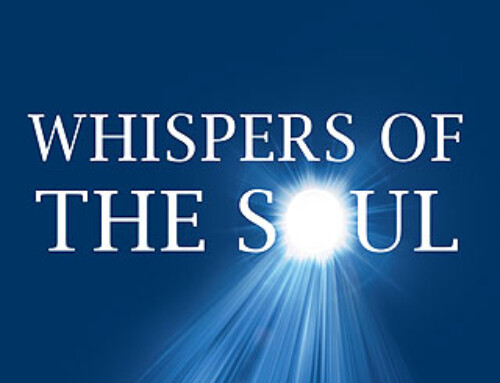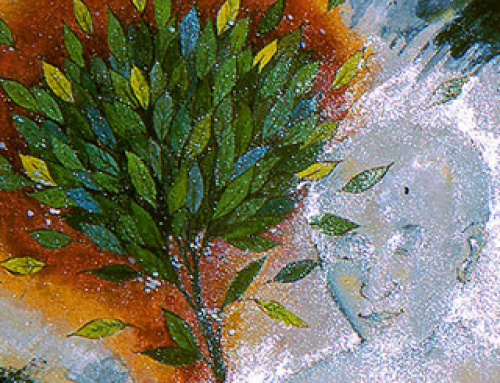It is beneficial to note that, while reading or listening to Bailey’s books, it’s highly effective to write down our thoughts so as to help the ideas formulate and solidify themselves within our consciousness. This is something that also occurs when time is spent on the creation of any form of art work. The creation of art, or a collection symbols, adds new layers of experience or interpretation to ones knowledge bank, allowing the level of understanding of such concepts to surpass what it would have been if one had not engaged their mind in creating them to begin with.
Bailey’s books are all pieces to the same puzzle, and only through understanding all of them, can the Truth finally be revealed.
This concept of ‘magic’ seems to be an umbrella term used to label processes that we currently categorize as functioning beyond our current level of understanding or explanation. Bailey uses the term super-human, and the very definitaiton of magic involves manifesting events that are super-normal or super-natural, through use of symbol and ritual. If one listens to how Bailey uses this term ‘super’, it defines that which is exists above our current level of human experience. She uses the terms ‘subhuman’, ‘human’, and ‘superhuman’, to designate levels of experience from the perspective of our current level of human understanding. The use of ritual can be interpreted as meditation and the use of symbols can be expressed through meditation or in artwork, such as that which is found in the tarot. Both meditation and symbols, or magic, are necessary instruments for our higher consciousness to communicate with our lower. When Bailey uses the term magic, if one understands it correctly, she is using a term that most accurately describes both what the method of development the transformative experience entails, as well as the final result.
Exploring Bailey’s explanation of the Sutras is an exercise that may not necessarily be understood at first.
The meditation work that is done, and the realizations that develop from it, are what allow one to understand what she is referencing in her writings. Yet, one cannot develop the necessary advancements within meditation practice without first stumbling through the difficult reading she has provided for us. They go hand in hand. Only when the student, or chela, has mastered this relationship can they begin to use the clues provided in her book in their appropriate way.
There is a level of understanding that occurs beneath the literal understanding of the words written on the page or listened to, that can only be reached once one has experienced their meaning via mediation. This is perhaps why, at first, many find Bailey difficult to read. It is because one has to actively develop the necessary experience to process what she is describing in metaphor and simile, not just inactively comprehend the definition and rhythms of her word usage, although that is also key. Just like Bodo’s books, if one does not break the egg by muddling through the difficulty of her language, one cannot begin to develop an understanding of it, or apply its meanings to the meditative experience, just as it is required with the walking of the ‘Path.’
A major link between ones own consciousness and the teachings in ‘Light of the Soul’ occurs after one realizes that their own consciousness is not linked to the qualities of form or time as they are experienced by the mind. This concept is something one can be aware of but will have no experience of until it is realized through meditative practice. Until the union between knowledge and experience is achieved, it is merely a superficial concept floating about throughout the knowledge bank of the mind.
The concept of ‘meditation without seed’ is something one can continue to ponder on in order to grasp the act of being able to connect with ones own consciousness without the need to categorize the experience through the many reaction facets of mind. One cannot eliminate form, for that is the structural limitation of the human mind, but there is something that can occur within the meditation experience that can lead one to connect with consciousness without the symbolism, on a level that lays behind the object in mind, and which is much more connected to pure consciousness. Bailey’s explanation of the yogas mentions how it is possible to see what lies beyond the symbol.
By relinquishing the focus and control of physical form, and all of the unproductive mechanisms that come with it, the space for love can develop.
In ‘Light of the Soul’, Bailey mentions that the body needs to be prepared as a vehicle for God to work through. One must allow the meaning of this statement to pool over them as they attempt to understand the Self as it exists in the head, and become aware of the body as merely an empty shell or animated tool that responds to the movements directed to it from the head. As one engages in such an exercise, a distinct sensation of the self develops, and one begins to understand the sense that the true self is trapped inside the head and is being dragged along by the body for as long as its form exists on earth. A realization emerges, as one begins to sense themselves as a being bound inside a body, wanting to be set free to soar amongst the stars. This is the awareness that begins to develop via the meditative experience that is the Initiation process, as we begin to identify with our true inner self, rather than the illusory and transient outer form.
The human design is so convincingly advanced that we mistake it for being the actual truth of being, or the crux of who we are, a misunderstanding which keeps us functioning at the most basic level of sensory experience. Everything we take as important in this form existence is actually unimportant with regards to freeing ourselves from being trapped inside of it. Even what we think of as love between humans is illusory, because it is based on form and personality, not the nature of our true self.
While attempting to sit in that place that is not attached to reaction or thought of any kind, and beginning to control the vrittis, there will develop a change in the nature of the meditative experience. The more ’empty’ one attempts to make the mind, and self, from reaction or categorization, the more ‘free’ ones sense of being seems to begin to blink into and out of meditation. This is what Bailey refers to as being able to ‘hold the mind steady in the light’. It seems as if one has to retrain the mind to be ‘counter intuitive’ to its regular mode of operation, which may at first seem extremely difficult to do. However, the egg must start to crack before one is to begin to climb out of it and up toward that difficult hill of realization.
Focusing on breathing is a suggestion that any yoga teacher will instruct you to engage in and one that has become such a common place suggestion that even the non-meditative person is familiar with. However, there is a difference between instructing oneself to do something and gaining the experience to actually do it properly. Bailey mentions that control of breath is something that will begin to occur as one develops themselves with their inner yoga, which is what we are all learning to do from Bodo’s teachings.
During the development of such a practice, an increased experience of freedom from time and space will emerge as images begin to simultaneously flash across the mind. This is the lower version of what beings who are higher developed constantly engage in – a state of complete ‘oneness’ with everything. This is what Bailey means when she suggests that the student will learn that he is one with all, and that knowing all is to know himself.
The result of experienced ‘knowledge’ and it’s ‘boundlessness’ from form, and mental constraint, is that there is a sense of ‘nothingness’.
However, this sense of nothingness is really not empty at all, but is the beginning of touching an all encompassing, boundless bliss, which is what Bailey refers to as touching Ishvara, or the void.
The millions of categorizations that our mind engages in a day, behaves as a barrier between ourselves and Mind. Every moment of every second, we are reacting in our mind, as opposed to purely existing within the experience, which our mind prevents us from doing. Even the categorizations we construct to facilitate study, such as words and concepts, bind our experiences into millions of tiny bubbles of bundled information, processed in a linear form through time, each needing to follow one behind the other in order for us to comprehend their meaning. As we have used them to learn, we can also learn to release ourselves of them, and shed them in order to experience the higher state of our boundless self, which is really not separate from anything at all, and hence has the ability to experience everything at once, and be Love, all at once.
Eventually, as one progresses throughout levels of meditative awareness, one will shift from picturesque movie-like images to merely receiving a few words occasionally during meditation. In ‘Light of the Soul’, Bailey provides an explanation of the phrase, ‘the simpler the voice, the higher the idea’.
– Alura Sky






Leave A Comment